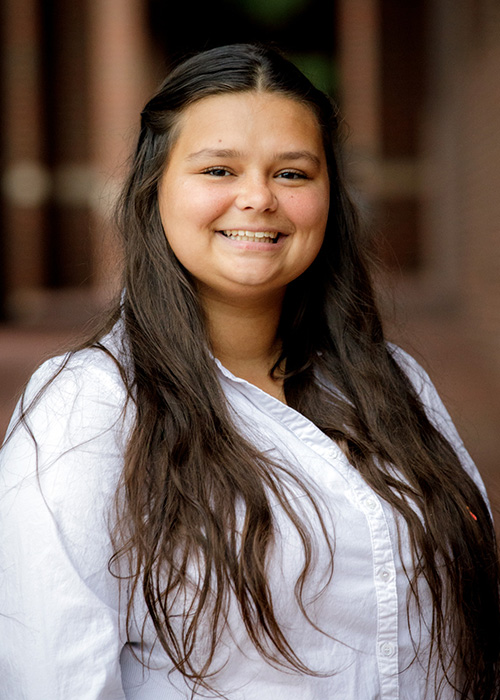
OSU undergraduate presenting research at global event
Friday, April 19, 2019
Oklahoma State University environmental science major Rainee DeRoin loves all things water. For the past two years the 21-year-old junior has monitored seven small watersheds — including lands that have eastern redcedar, prairie and switchgrass — at OSU’s 1,820-acre Cross Timbers Experimental Range southwest of Stillwater as part of a long-running research study.
DeRoin has been selected to present her findings at the Second World Congress on Undergraduate Research this May in Germany.
“Our aim is to bring together the world’s best undergraduate research and to work on some of the most significant challenges the global community is facing today,” program organizers promise.
DeRoin — a first-generation college student from Tulsa — credits the Oklahoma Louis Stokes Alliance for Minority Participation (OK-LSAMP) with giving her direction when she first got to OSU. OK-LSAMP includes 11 Oklahoma universities led by OSU working together to increase the number of underrepresented students earning degrees in science, technology, engineering and math fields.
“They are actually the reason I started doing research because I didn’t know where to start but knew I wanted to do it,” she said.
OK-LSAMP Director Brenda Morales is thrilled DeRoin’s efforts are being rewarded.
“Her zealous attitude towards her research has provided her with many opportunities to present,” Morales said. “I am so excited to see what Rainee has in store for her future and how her research can impact the world.”
Numerous students, including DeRoin, and faculty members from OSU’s Division of Agricultural Sciences and Natural Resources have participated in the now 10-year, multimillion-dollar study of encroached eastern redcedar and native prairie watersheds at the Cross Timbers Experimental Range, which is west of South Cottonwood Road at West 56th Street.
Funding for the study comes from the U.S. Geological Survey and the Oklahoma Agricultural Experiment Station.
“The purpose is to see if taking eastern redcedar out and replacing them would be both economically and environmentally friendly,” DeRoin said. “We are hoping that if we show that switchgrass has better sediment yield and runoff that farmers will want to replace their eastern redcedars.”
Eastern redcedar is a native, fire-sensitive juniper species that is invading upland areas that are no longer regularly burned.
Surface runoff is water that flows over the land surface. A land area that produces runoff draining to a common point is called a watershed. And sediment yield is the amount of sediment per unit area removed from a watershed by flowing water during a specified period of time.
“If the vegetation is using lots of water like redcedar does, less flows into streams means less is available for municipal, agricultural and industrial uses as well as ecological flows for aquatic organisms,” said Dr. Rod Will, silviculture professor in OSU’s Department of Natural Resource Ecology and Management. “We want to minimize sediment yield no matter what since sediment is considered to be a pollutant and causes loss of topsoil and nutrients from the ecosystem.”
His team found that a 12-inch diameter tree could use as much as 42 gallons of water on a hot day and as little as one gallon on a dry winter day.
DeRoin — who hopes to pursue a master’s degree in environmental science at OSU — is looking forward to sharing OSU’s data at the conference, which will be her first trip overseas.
“I don’t know what to expect but I’m super excited,” she said. “I don’t really meet a lot of other environmental scientists who do research, and I hope to find some others like me.”
MEDIA CONTACT: Monica Roberts | Director of Media Relations | 405-744-4800 | monica.roberts@okstate.edu
